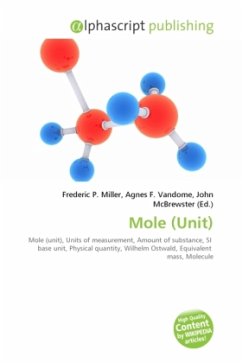The mole is a unit of amount of substance: it is an SI base unit, and one of the few units used to measure this physical quantity. The name "mole" was coined in German by Wilhelm Ostwald in 1893,although the related concept of equivalent mass had been in use at least a century earlier. The name is assumed to be derived from the word Molekül. The first usage in English dates from 1897, in a work translated from German.The names gram-atom and gram-molecule have also been used in the same sense as "mole",but these names are now obsolete.The mole is defined as the amount of substance of a system that contains as many "elementary entities" as there are atoms in 12 g of carbon-12.A mole has 6.0221415×1023 atoms or molecules of the pure substance being measured. A mole will possess mass exactly equal to the substance's molecular/atomic weight in grams. That is to say, a substance's atomic or molecular mass in atomic mass units is the same as its molar mass in grams. Because of this, onecan measure the number of moles in a pure substance by weighing it and comparing the result to its molecular/atomic weight.
Bitte wählen Sie Ihr Anliegen aus.
Rechnungen
Retourenschein anfordern
Bestellstatus
Storno








